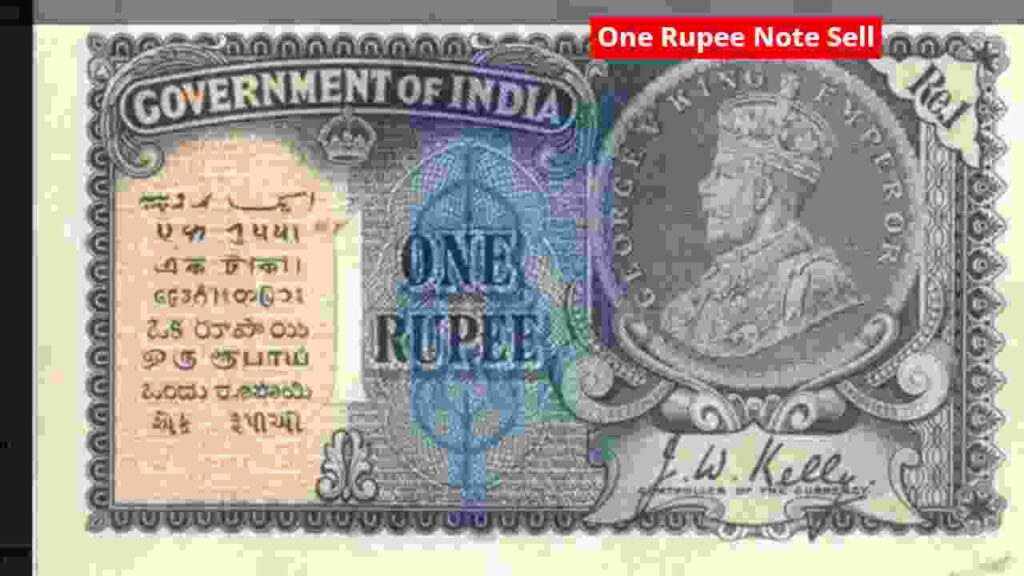A rare 1 Rupee Note of the British Era is being sold like gold in today’s market. Know its history, features, and how collectors are paying huge amounts for this old currency note.
Introduction
In today’s world, where digital payments and UPI have become the backbone of transactions, it’s hard to believe that a 1 Rupee Note of the British Era is making headlines. Yes, the same small currency note that once carried little value is now being treated like gold by collectors and auctioneers.

Collectors of rare coins and currency are paying a huge price for these notes. Depending on condition and year, a single note can fetch thousands to lakhs of rupees. This craze is not only about money—it’s about history, heritage, and pride in owning a piece of India’s colonial past.
Why is the 1 Rupee Note of the British Era Valuable?
The value of the British-era 1 Rupee Note is not in its face value, but in its:
Rarity – These notes were printed during colonial times and are no longer in circulation.
Historical significance – It carries the legacy of India’s struggle and transition from colonial rule to independence.
Unique features – The signature, printing year, and watermark make every note different.
Collector’s demand – Numismatists (coin and currency collectors) are ready to pay a premium for these rare notes.
Historical Background of the 1 Rupee Note
The first 1 Rupee Note was introduced in 1917 during British rule. It was printed in England and later in India. Unlike coins, the note was lighter, easier to carry, and symbolized modernization of India’s economy.
Also Read – Shock in Gurugram Attack On Elvish Yadav’s Home.
Some important milestones:
1917: First 1 Rupee Note issued with King George V’s portrait.
1940s: Notes carried the sign of the Controller of Currency instead of RBI Governor.
1947: After independence, India issued 1 Rupee Notes with the Ashoka Pillar.
Today, these early notes have become rare antiques.
Features That Make These Notes Special
- Portrait of King George V or VI – showing the British monarchy’s rule.
- Unique serial numbers – collectors pay more for special numbers like 111111 or 786.
- Signatures of British officials – like J.W. Kelly and C.D. Deshmukh.
- Watermark paper – proving authenticity.
- Old printing ink and design – very different from modern notes.
Current Market Value of British Era 1 Rupee Note
The price of a 1 Rupee Note of British times can start from a few thousand rupees and go up to ₹2 lakh or more, depending on rarity and demand.
Normal old notes – ₹5,000 to ₹15,000.
Rare notes (special serial numbers) – ₹50,000 to ₹1,00,000.
Extremely rare pieces (first issues, error notes, limited prints) – ₹2 lakh or higher.
Some online auction platforms and numismatic exhibitions in India have witnessed heated bidding wars for these notes.
Why Collectors Compare It to Gold?
Just like gold, the price of rare notes keeps increasing with time. Owning a British-era 1 Rupee Note is like holding a timeless asset. Collectors see it as:
- A safe investment with rising value.
- A status symbol for antique lovers.
- A treasure of Indian history that can be passed down generations.
Where Can You Buy or Sell Old 1 Rupee Notes?
- Numismatic Societies of India – Regular exhibitions and auctions.
- Online auction sites – Platforms like OLX, eBay, IndiaMart, and antique currency sites.
- Antique shops – Some trusted dealers sell old notes.
- Collector’s networks – Private deals between numismatists.
Tip: Always check authenticity before buying or selling. Fake notes are also in circulation.
How to Identify Genuine British Era Notes?
Check for watermarks and signatures.
Look at the printing year and issuing authority.
Inspect the condition – crisp, untorn notes fetch higher value.
Verify with certified numismatists.
Sentiment Around Collecting Old Notes
For many Indians, owning such rare currency is not just about profit. It’s about:
Nostalgia – A reminder of India’s pre-independence era.
Patriotism – A symbol of history and pride.
Passion – A hobby that connects people across generations.
Conclusion
The 1 Rupee Note of the British Era is more than just a piece of old paper. It is a historical jewel, a collector’s dream, and an asset compared to gold in today’s times. With values touching lakhs of rupees, it shows that sometimes, the smallest currency can carry the biggest worth.
FAQs on 1 Rupee Note of the British Era
Q1. What is the value of a 1 Rupee Note from the 1940 British Era?
Depending on condition, it can sell between ₹10,000 to ₹1 lakh.
Q2. How do I know if my old note is original?
Check the watermark, serial number, and signature. Consult an expert numismatist for verification.
Q3. Can I sell old 1 Rupee Notes online?
Yes, many online auction sites allow you to list and sell rare currency notes.
Q4. Why is the British-era 1 Rupee Note in demand?
Because of rarity, history, and huge demand from collectors worldwide.
Q5. Is investing in old currency profitable?
Yes, rare notes and coins often increase in value with time, much like gold and silver.


[…] Also Read – 1 Rupee Note Of the British Era. […]